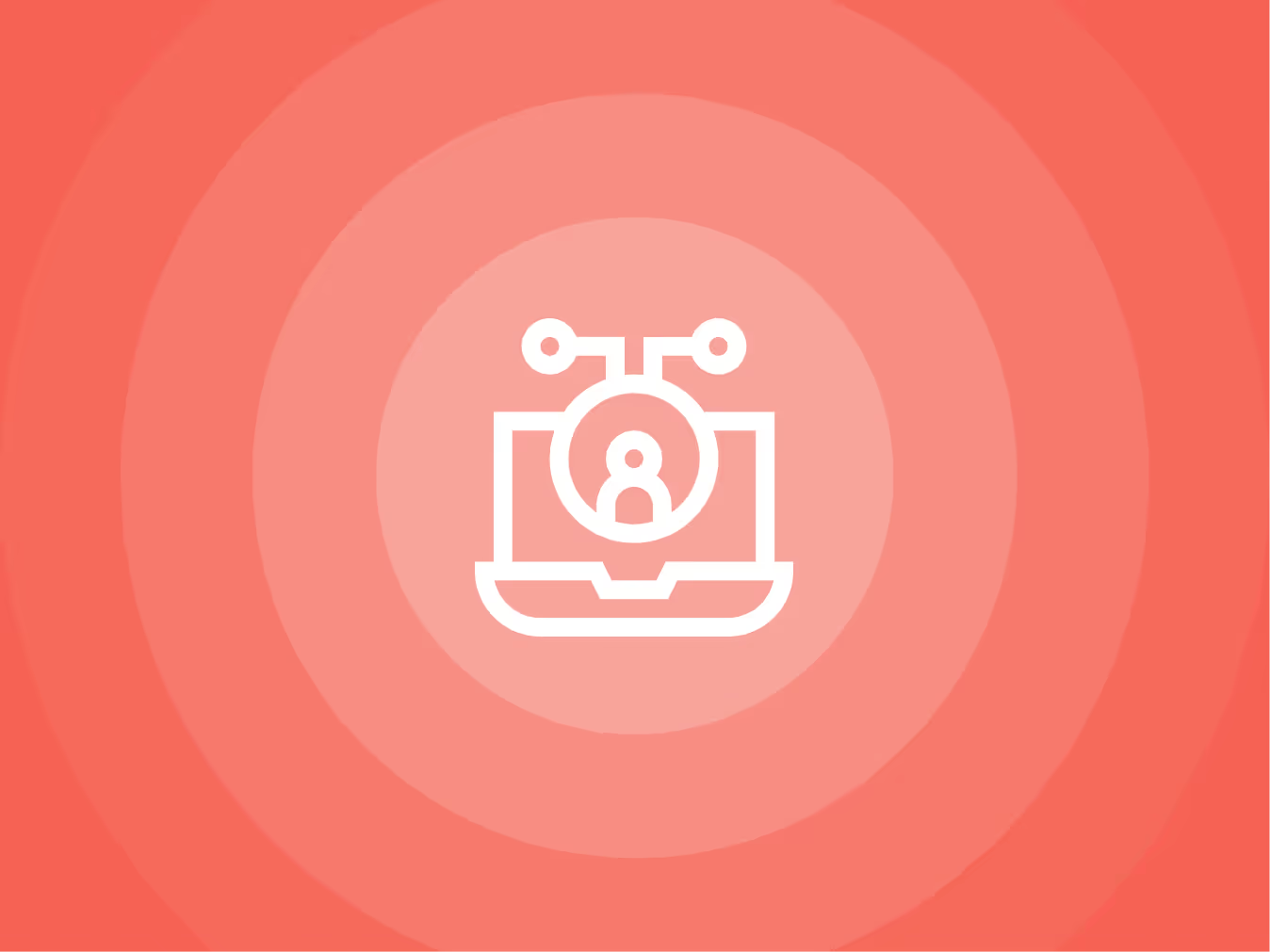Technology is changing the business landscape at an unprecedented pace. As every industry embarks in the race to keep up, HR teams are pushing to embrace technology and leverage data to future-proof their approach and practices of People management. So exactly how is the technological leap affecting HR? And what will Human Resources teams need to do to remain in-step with industry trends?
The Evolution of HR
Over the years, HR has transformed from basic people management into a strategic partnership that influences an organization's performance, culture, and growth. HR's purview has expanded to encompass talent acquisition, management, learning and development, employee engagement, employee relations, compensation and benefits, organizational development, and more. Notably, the HR field has made significant strides in adopting technology, including HR automation tools that revolutionize HR practices.
According to a recent Gartner HR report, 53% of HR leaders prioritize organizational design and change management, underscoring HR's role in shaping the organization's future. HR teams drive organizational transformation by facilitating positive changes in 3 fundamental areas: identity, agility, and scalability.
As HR continues to evolve through technology adoption, we can anticipate advancements in the following areas:
Efficiency and Productivity: HR tech developments automate repetitive tasks like payroll, benefits administration, recruitment, and performance management. By reducing administrative burdens, HR can focus on more impactful activities, from fostering company culture to driving innovation.
Employee Experience and Engagement: AI tools for employee engagement enhance the employee lifecycle, offering flexibility, convenience, and personalization. This strengthens company culture and bolsters retention efforts.
Data-Driven Decision Making: Modern HR analytics tools collect, analyze, and visualize data from various sources, including employee surveys, performance reviews, learning outcomes, and business metrics. This empowers HR to gain actionable insights into the workforce's current state, identify employee performance gaps, pinpoint growth opportunities, and evaluate HR initiatives' impact more precisely.
Innovation and Creativity: Technology fosters a culture of innovation and creativity by encouraging collaboration, experimentation, and continuous learning within organizations.
The Digital Transformation Era
We are currently in the midst of a digital transformation era that affects every industry and sector. Digital transformation enhances efficiency, quality, innovation, customer satisfaction, competitiveness, and profitability. However, digital transformation is not solely about technology; it revolves around people. People drive and enable digital transformation, creating, using, adopting, adapting, and benefiting from digital technologies. Therefore, HR plays a pivotal role in facilitating digital transformation by ensuring that people possess the skills, mindset, and culture required to thrive in the digital era.
HR can support digital transformation by using tools to enhance its own processes and outcomes. These tools enable HR to reshape talent management, employee engagement, and organizational culture to align with the organization's digital strategy and objectives.
Recruitment and Onboarding
Recruitment is a critical HR function as it determines the quality and quantity of talent joining the organization. However, modern recruitment brings challenges related to workload, time constraints, and scalability, especially when handling a high volume of applicants.
Posting job openings on multiple platforms and reviewing numerous resumes can be time-consuming and overwhelming for recruiters. Additionally, managing and organizing applicant data becomes increasingly difficult as the applicant volume grows. These challenges underscore the importance of efficient recruitment processes, including the use of applicant tracking systems like Manatal, automation tools such as AI tools for recruitment, and effective communication channels to streamline hiring processes and manage workloads effectively.
Onboarding, particularly for remote or hybrid workers, presents its own set of challenges, including difficulties in connecting and collaborating with colleagues and managers. Tools like onboarding software and other HR tech solutions bridge these gaps, enhancing and automating the onboarding experience.
Employee Training and Development
Fostering a culture of continuous learning is crucial for employees to adapt to evolving needs and expectations, stay relevant, and remain competitive in the market. Traditional training methods such as classroom sessions, workshops, and seminars have limitations in terms of scope, scale, and impact, and may not cater to diverse learning needs and the dynamic nature of work.
To overcome these limitations, HR can leverage Learning Management Systems (LMS). LMS are software applications that facilitate the delivery, management, and tracking of online learning programs. LMS enables HR to create, distribute, and monitor various types of learning content, including courses, videos, podcasts, e-books, quizzes, surveys, and more. Key benefits of LMS include flexibility, personalization, and engagement.
Employee Engagement and Wellbeing
Employee engagement, defined as the degree of employee commitment, motivation, and satisfaction with their work and workplace, is critical for productivity, retention, innovation, and customer satisfaction. HR professionals can enhance employee engagement by using HR technology tools such as AI tools for employee engagement that collect feedback, analyze data, and provide insights on engagement levels and drivers.
Additionally, technology can facilitate remote work and support employee wellbeing, which has gained importance in the aftermath of the global pandemic. Remote work offers employees flexibility, convenience, and safety, and HR can leverage technology to make remote workforce management more effective.
The Power of People Analytics
People analytics involves using data and analytics to understand and improve how people work. This approach enables HR professionals to make evidence-based decisions rather than relying on intuition or guesswork. People analytics also allows HR professionals to demonstrate the impact of their initiatives on business outcomes, such as revenue, profit, customer satisfaction, and retention. People analytics can be applied across various HR aspects, including talent acquisition, talent management, talent development, employee engagement, diversity and inclusion, and more.
Here are some examples of how people analytics can be employed:
Talent Acquisition: Data from resumes, assessments, interviews, and social media can help identify the best candidates for a job, evaluating their skills, fit, and potential.
Talent Management: Using data from surveys, feedback, performance reviews, and exit interviews, HR professionals can understand the drivers of employee performance, satisfaction, retention, and turnover while helping reduce rating bias.
Talent Development: People analytics can aid in designing and delivering effective learning and development programs by measuring learning needs, preferences, and outcomes using data from assessments, learning platforms, and business metrics.
Enhancing Performance Management
Performance management involves setting goals, monitoring progress, evaluating results, and providing feedback to employees. It is essential for motivating employees, improving performance, and aligning individual efforts with organizational objectives. However, traditional performance reviews are often perceived as ineffective, biased, and demotivating by both employees and managers.
HR professionals can enhance performance management by adopting data-driven performance management systems. These systems enable objective evaluations and provide continuous feedback. They utilize data from multiple sources, such as goals, projects, tasks, behaviors, and outcomes, to measure employee performance. Moreover, they offer real-time feedback to employees and managers, highlighting strengths, weaknesses, and areas for improvement.
Diversity and Inclusion
Diversity and inclusion encompass values and practices that ensure all employees are respected, valued, and supported in the workplace. These principles not only align with ethical standards but also enhance creativity, innovation, and performance. According to a McKinsey report, companies with gender diversity in executive teams outperformed those without by 25%.
HR professionals can utilize data to identify and address bias, supporting inclusive hiring and promotions. Data can reveal patterns of discrimination, inequality, and underrepresentation, prompting HR to take corrective actions to mitigate instances of performance appraisal bias or otherwise.
Overcoming Resistance to Change
While adopting new HR technologies and data-driven approaches can bring significant benefits, it can also encounter resistance from stakeholders who may be apprehensive about change. Resistance to change may stem from factors like lack of awareness, understanding, trust, or support.
To manage resistance and gain buy-in from stakeholders, consider these strategies:
Communicating the Vision and Value of Change: Clearly communicate the vision and value of adopting new HR technologies and data-driven approaches. Explain how these changes can help achieve goals, solve problems, and improve situations to address stakeholders' concerns and questions effectively.
Involving Stakeholders in the Change Process: Engage stakeholders in the change process by seeking their input, feedback, and suggestions. Empower them to participate in decision-making, testing, and implementation to enhance their sense of ownership and commitment.
Providing Training and Support: Offer training and support to stakeholders on using new HR technologies and data-driven approaches. Ongoing coaching, mentoring, and feedback can boost their readiness, ability, and willingness to change, ensuring a successful transition.
Data Privacy and Security
Data privacy and security are essential principles and practices for handling HR data lawfully, ethically, and securely. These measures protect the rights, interests, and trust of employees, customers, partners, and regulators. They also ensure compliance with data protection regulations like General Data Protection Regulation (GDPR) or Singapore’s Personal Data Protection Act (PDPA)
Consider these measures for data privacy and security:
Conducting a Data Audit: Understand what data you possess, where it's stored, how it's used, who it's shared with, and how long it's retained. Conducting a data audit helps assess risks and implement safeguards.
Obtaining Consent: Before collecting, using, or sharing personal data, obtain consent from data subjects. Inform them about data processing purposes, scope, duration, and recipients, respecting their rights to access, rectify, erase, restrict, or object to data processing.
Encrypting Data: Encrypt data at rest and in transit to prevent unauthorized access. Encryption renders data unreadable without the secret key, ensuring only authorized parties can decrypt and access it.
Backing Up Data: Regularly back up data and store it securely to enable recovery in case of loss, damage, or corruption. This involves creating copies of data and storing them separately from the original data.
Embrace the Future of HR
In the ever-evolving world of work, technology and data-driven approaches are not optional for HR success—they are imperative. By embracing technologies such as recruitment software platforms, HRIS, and AI-powered HR tools, Human Resource professionals can enhance their processes, improve outcomes, and create a competitive advantage for their organizations.

Modern HR automation tools like Omni free HR teams from administrative cycles by automating the entire end-to-end employee lifecycle—from recruitment and onboarding to employee engagement and payroll—allowing HR to redirect their time to strategic work that drives business growth.
With Omni, you gain access to data-driven insights that empower informed decision-making, as well as seamless integrations that effortlessly connect with your existing employee favored systems, making your entire engagement process more efficient and modern.
Powering Asia’s fastest-growing, modern companies, Omni scales alongside your company so you can customize and leverage the system to meet your business exactly where you are—as well as where you’re going.
With a full suite of modules to support every aspect of your business, Omni’s platform offers an intuitive and fully customizable platform that integrates with your team’s favorite tools for a seamless and timely adoption.

To learn more on how Omni can help future-proof your HR functions, access a customized free demo for your team!
Full HR & Payroll coverage for Philippines, Singapore, Malaysia, Hong Kong, and Indonesia. Each market has local support teams and built-in compliance features.
Starting at $3/employee/month for core features. Volume-based discounts are available for growing teams. Book a demo for custom pricing.
Enterprise-grade security with ISO 27001, GDPR certifications, and local data residency options.
4 weeks average. Includes free data migration, setup, and team training. No hidden fees.
Built specifically for Asia with local payroll processing, same-day support in Asia time zones, and 40% lower cost than global alternatives.






.avif)

